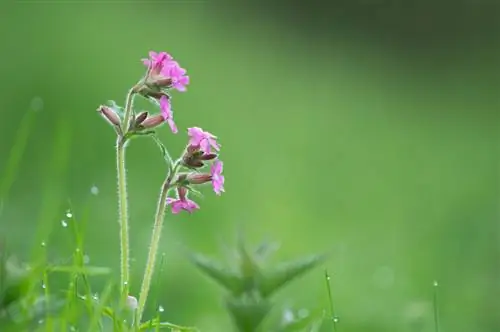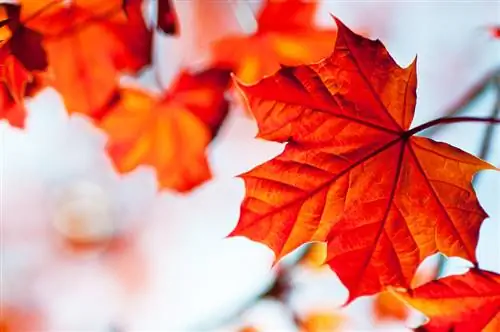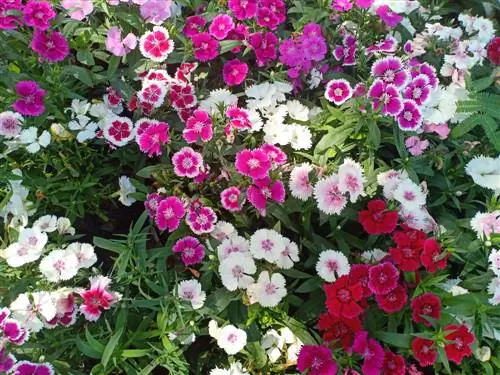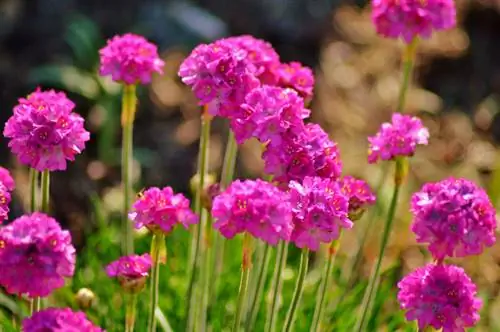- Author admin [email protected].
- Public 2023-12-16 16:46.
- Last modified 2025-01-23 11:20.
The red campion is widespread in Germany as well as in Central and Western Europe and is found primarily in meadows, in sparse deciduous forests and on the edges of forests. The striking pink flowers can be seen from afar and serve as food for numerous species of insects.

What is the red carnation?
The red campion (Silene dioica) is a biennial plant from the carnation family that is widespread in Europe. It grows in moist meadows and deciduous forests and reaches a height of 30-90 cm. The showy pink or red flowers appear from April to October.
Data and facts about the red carnation at a glance
- Botanical name: Silene dioica
- Family: Carnations
- Genus: Campion (Silene)
- Popular names: red catchfly, daylight carnation, red night carnation, Lord's blood, red forest carnation
- Origin: Eurasia
- Distribution: mainly Central and Northern Europe
- Location: moist meadows and forests, deciduous forests, riparian forests, forest edges, in the Alps up to 2,400 meters altitude
- Growth habit: herbaceous plant
- Perennial: biennial, deciduous
- Height: between 30 and 90 centimeters
- Flowers: radially symmetrical, five split petals
- Colors: pink, red
- Flowering period: April to October
- Fruits: capsule fruit with poppy seeds
- Leaves: lanceolate, dark green
- Propagation: seeds, division
- Winter hardiness: yes
- Toxicity: no, but contains highly irritating saponins
- Use: Ornamental plant, formerly also used as a detergent
Partially shaded location preferred
As in its natural location, the red carnation also prefers a partially shaded location in the garden. The perennial also likes a lot of warmth, but it must not dry out - it is not for nothing that the plant is often found in damp meadows. Basically, the wetter the location, the brighter the red carnation can be. For this reason, locations on pond banks etc. are ideal. In addition, the carnations should always be planted in groups, as this is the only way they can develop their full potential.
Cultivating red carnation in the garden
The red carnation is a very flowering perennial, provided the site conditions are right. Otherwise, the plant does not need much care: it does not need to be fertilized or cut regularly. The plant does not need any help with propagation either, as it reproduces itself very reliably. Carnations are extremely hardy and do not need any additional winter protection.
Tip
Plant as many different types and varieties of carnations as possible together in groups. These will interbreed with each other over time and produce the most interesting cross-breeding products. In addition to the red carnation, other Silene species are also suitable for this purpose, such as the Vexier carnation (Silene coronaria), the common pitch carnation (Silene viscaria) or the cuckoo carnation (Silene flos-cuculi).






